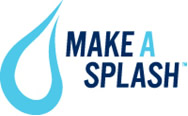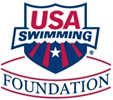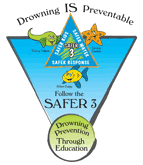Achievment Award System
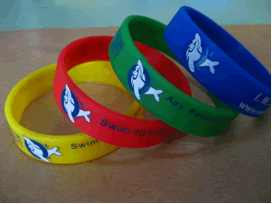 We are excited to announce the implementation of the Swim Lessons Company’s brand new Swim Lessons Awards Progression & Water Safety System! Now, your child can benefit from yet another unique feature of the Swim Lessons Company program. The Swim Lessons Company Awards Progression features a swim bracelet system that is an immediate, effective, and fun way to recognize your child’s progress. Even more importantly, you will find the color-coded water safety system is a means of educating yourself and other parents on swim safety and drowning prevention.
We are excited to announce the implementation of the Swim Lessons Company’s brand new Swim Lessons Awards Progression & Water Safety System! Now, your child can benefit from yet another unique feature of the Swim Lessons Company program. The Swim Lessons Company Awards Progression features a swim bracelet system that is an immediate, effective, and fun way to recognize your child’s progress. Even more importantly, you will find the color-coded water safety system is a means of educating yourself and other parents on swim safety and drowning prevention.
How it Works
Upon arrival for your child’s first swimming class, his/her instructor will present the child with the appropriate colored, waterproof bracelet (the type used in the popular Lance Armstrong “LIVESTRONG” campaign). The bracelet’s color is determined by the Swim Lessons Company course that you have registered your child for, i.e., Swim 101, Swim Strokes 201, Advanced Strokes 301, etc.
In addition, each skill in which your child will learn in the course is abbreviated and printed on the bracelet next to a star. When your child masters the skill, his/her instructor will use a “special star puncher” and punch out the star next to the new skill your child has demonstrated he/she has learned. Upon successful completion of each skill abbreviated on the child’s present bracelet, his/her instructor will then present your child with the next bracelet, which is a new color with a new set of skills. This, of course, is how you advance and graduate your child to the next level/course. Not only do the bracelets serve as a reward, they also serve as an indicator of the child’s skill level, similar to the karate belt system, which brings us to the unique water safety aspect of bracelet system.
The SAFETY Component
WATER SAFETY is the other key dimension to The Swim Lessons Company Awards Progression & Water Safety System. The colors you see—serve a significant purpose. The colors communicate to parents, teachers, and lifeguards the skill level of the child through the color-coded system. The bracelets are color-coded as follows:

1. RED stands for DANGER: RED stands for DANGER: The Swim 100 level bracelet is red. A red bracelet communicates to parents, lifeguards, and teachers that the child is always in danger when in or around the water. These safety guidelines should be followed:
“Touch supervision” be employed at all times when this child is in or around the water.
A U.S. Coast Guard approved Lifejacket should be used anytime touch supervision is not possible.
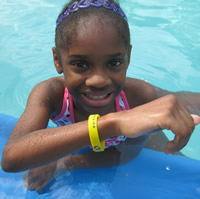 2. YELLOW stands for CAUTION: The Swim 200 level bracelet is yellow. A yellow bracelet communicates to parents, lifeguards, and teachers that caution should be taken when the child is in or around the water. These safety guidelines should be followed:
2. YELLOW stands for CAUTION: The Swim 200 level bracelet is yellow. A yellow bracelet communicates to parents, lifeguards, and teachers that caution should be taken when the child is in or around the water. These safety guidelines should be followed:
“Close and constant supervision” should always be employed when the child is in or around the water.
A U.S. Coast Guard approved Lifejacket should be used anytime “close and constant” supervision is not possible.
 3. GREEN stands for GO: The Swim 300 bracelet is green. Green represents go, and communicates to parents, lifeguards, and teachers that this child is a good swimmer. However, these safety guidelines should still be followed:
3. GREEN stands for GO: The Swim 300 bracelet is green. Green represents go, and communicates to parents, lifeguards, and teachers that this child is a good swimmer. However, these safety guidelines should still be followed:
“Constant supervision” should still be employed when the child is in or around the water.
While a U.S. Coast Guard approved Lifejacket is not required, if the child is under constant supervision around a swimming pool, it is still strongly recommended that when the child is around a body of water such as a lake or river.

4. BLUE stands for STRONG: The Swim Lessons University graduation bracelet is blue. Blue communicates to parents, lifeguards, and teachers that the child is a strong swimmer and is proficient in the water. However, these safety guidelines should still be followed:
“Constant adult supervision” is always recommended for children under the age of 16.
If a lifeguard is not present, a buddy system should be used for those ages 16 and older who have earned the blue bracelet.
How Many Bracelets are There?
There is one bracelet per course/level, with six stars and abbreviated skills represented on each bracelet. In addition to the three course/level bracelets, there is a graduation bracelet; therefore there are four different bracelets in all.
When should the bracelet be worn?
Encourage your child to wear his/her bracelet to every class! This provides you and the instructor with instant information about your child’s skills. For example, do you have a 1-Star Swim 101 child or a 5-Star Swim 101 child? Just as important, your instructor can instantly reward your child when he/she masters a new skill. Even better yet—encourage your child to wear their bracelets to and from the pool. Children will be very proud of their bracelets and you can share your child’s accomplishments with their friends and relatives! It is important to remind you to focus on what your child has accomplished, and avoid pressuring your child about what he or she hasn’t yet mastered. The backbone of the bracelet awards idea is that it is a reward system and it should be just that: A reward!
What if My Child loses his bracelet?
The initial bracelet awarded for each skill is free. However, if your child loses a bracelet, there will be a $1.00 charge for a replacement.
What Skills are the 6 Major Skills on each Awards Bracelet?
 Swim 101 / 102 – RED BRACELET
Swim 101 / 102 – RED BRACELET
There are six (6) skill abbreviations and stars in Swim 101/Swim 102, with a yellow bracelet awarded upon graduation for mastering the sixth and final skill: “Swim like a Fish,” with either a “pop-up” breath or “roll-over” breath. “Swim Like a Fish” is essentially a swim at the surface of the water with the face in the water, preferably in an “in-line” position except when breathing. Instructors should substitute freestyle without the breathing for “Swim Like a Fish” for Swim 102 students (beginners between the ages of six and nine).
- Swim 101/102: Front Kick (FK)- Performs the front kick with noodle (Swim 101) or kickboard (Swim 102) for 15 feet.
- Swim 101/102: Back Kick (BK)- Performs the back kick with noodle for 15 feet.
- Swim 101/102: Breath Control (BC) - Performs 3 comfortable submersions
- Swim 101/102: In-line Kick (IK)- Performs the in-line kick with barbell, face in the water, for 3 seconds.
- Swim 101/102: Paddle Stroke (PS) - Performs the paddle stroke for 15 feet.
- Swim 101/102: Swim Like a Fish (SLF)- Performs “Swim Like a Fish” using a “pop-up” or “roll-over” breath for 15 feet (Swim 101) or Freestyle without side breathing (Swim 102).
***Students may use the Power Swimmer on all skills EXCEPT “Swim like a Fish” and “Freestyle.”
 Swim Strokes 201 / 202 – YELLOW BRACELET
Swim Strokes 201 / 202 – YELLOW BRACELET
There are six (6) skill abbreviations and stars in Swim Strokes 201/202, with a green bracelet awarded upon graduation for mastering the sixth and final skill: “Freestyle with Side Breathing.”
- Swim 201/202: Refined In-line Kick (RIK)- Performs the in-line kick without buoyancy equipment.
- Swim 201/202: Refined Back Kick (RBK) - Performs the back kick without buoyancy equipment.
- Swim 201/202: Refined Breath Control (RBC) - Performs 10 consecutive rhythmic bobs.
- Swim 201/202: Backstroke (BS) - Performs the backstroke for 25 feet.
- Swim 201/202: Freestyle (FS)- Performs the freestyle for 25 feet (no side breathing required).
- Swim 201/202: Side Breathing (SB) - Performs the freestyle with side breathing for 25 feet.
 Advanced Swim Strokes 301/302– GREEN BRACELET
Advanced Swim Strokes 301/302– GREEN BRACELET
There are six (6) skill abbreviations and stars in Swim 301/302, with a blue bracelet awarded upon graduation for mastering the sixth and final skill: “a 40 yard IM.” Swim 301/302: Refined Side Breathing in Freestyle (RSB) - Performs freestyle with side breathing for 30 feet.
- Swim 301/302: Refined Back Stroke (RBS) - Performs backstroke for 30 feet.
- Swim 301/302: Butterfly Kick (BUK) - Performs the butterfly kick for 30 feet.
- Swim 301/302: Breaststroke Kick (BK) - Performs the breaststroke kick for 30 feet.
- Swim 301/302: Butterfly (BUS) - Performs the butterfly stroke for 30 feet.
- Swim 301/302: Breaststroke (BRS) - Performs the breaststroke for 30 feet I.M.
- Swimmer: Graduation (blue) - Performs 40 yard Individual Medley (I.M.). 10 yards of each stroke: butterfly, backstroke, breaststroke, and freestyle.
 Should my child’s instructor change the lesson plan once my child masters one of the six skills?
Should my child’s instructor change the lesson plan once my child masters one of the six skills?
At Swim Lessons Company, we do not alter the lesson plan because a certain skill is mastered for two reasons.
- One reason is “skill transfer.” The skills that a child develops on one exercise will transfer another. For example, improving one’s breath holding and freestyle kicking skills transfers to the in-line kick, which transfers to the swim. Just because a child can freestyle kick doesn’t mean you should eliminate the kicking exercise. In addition, as the individual skills improve from isolated practice, so your child’s final product.
- A second reason is “confidence transfer.” When a child becomes “good” at a particular skill, the confidence the child gains from being successful at that skill will lead to his/her confidence and determination that he/she can get learn a skill he/she currently isn’t so good proficient at yet. When instructors spend too much time working only on the skills that the child can’t do, students tend lose confidence in themselves and become frustrated.
Finally, every skill — even those that are acknowledged through awards —can still be improved. Michael Phelps, arguably the best swimmer ever, still practices his freestyle kick with a kickboard every day!







